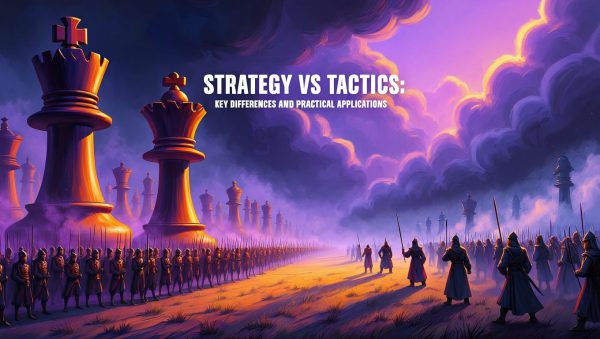
Navigating the Market’s Dual Realities: Deciphering Bull and Bear Dynamics
Dec 15 2024
In investing, deciphering the market’s cyclical nature is not just advantageous—it’s essential. At the heart of this cycle lie two formidable forces: the bull and the bear. These are not mere market conditions but reflections of collective human emotion, encapsulating millions’ hopes, fears, and expectations. To truly master the art of investing, one must delve deep into the essence of these phenomena, understanding their characteristics and the psychological undercurrents that drive them.
As the astute economist John Maynard Keynes warned, “The market can remain irrational longer than you can remain solvent.” This stark reminder serves as a beacon, highlighting the importance of comprehending market sentiment and its often irrational sway over financial landscapes. By exploring the intricacies of bull and bear markets, investors can equip themselves with the wisdom to navigate these tides, leveraging mass psychology to survive and thrive.
The Bull Market: Harnessing the Surge of Optimism
A bull market is a period of optimism characterized by sustained increases in stock prices buoyed by strong economic indicators, low unemployment, and robust corporate earnings. Investor confidence soars, and the collective belief is that the good times will continue indefinitely.
Historical epochs such as the dot-com boom of the late 1990s exemplify the exuberance of a bull market. Technological advancements fueled speculative investments during this era, and valuations reached stratospheric heights. Similarly, the recovery following the 2008 financial crisis ushered in a prolonged bull market, as economies rebounded and markets surged.
Yet, amidst the euphoria, caution must not be discarded. The legendary investor Warren Buffett cautions, “Be fearful when others are greedy, and greedy when others are fearful.” This paradoxical advice underscores the importance of contrarian thinking in investing. In bull markets, when greed and overconfidence can inflate bubbles, astute investors remain vigilant, mindful of the difference between true value and inflated optimism.
Understanding the mass psychology driving a bull market is crucial. Herd mentality often propels markets upward, as individuals follow the crowd, fearing to miss out on lucrative gains. This collective movement can detach prices from fundamental values, setting the stage for potential corrections.
Investors seeking to harness the benefits of a bull market should:
- Stay Disciplined: Adhere to investment strategies and avoid being swept away by hype.
- Conduct Due Diligence: Rigorously analyze fundamentals to differentiate between strong and overvalued investments.
- Set Clear Goals: Define investment horizons and exit strategies to secure gains before market sentiment shifts.
The Bear Market: Navigating Through the Veil of Pessimism
Contrasting the bull, a bear market is shrouded in pessimism. It is marked by a prolonged decline in stock prices, often triggered by economic downturns, rising unemployment, or geopolitical uncertainties. Fear grips the market, and investors retreat, seeking safety as asset values shrink.
The Great Recession of 2008 starkly illustrates the ferocity of a bear market. The collapse of the housing market and financial institutions triggered widespread panic and significant losses. Investor confidence plummeted, and the reverberations were felt across the global economy.
Yet, within the shadows of a bear market lie opportunities. As blood runs in the streets, valuations often drop below intrinsic values, presenting chances for discerning investors. Baron Rothschild, an 18th-century British nobleman and member of the Rothschild banking family, purportedly advised, “The time to buy is when there’s blood in the streets.” This perspective highlights the potential gains from counter-cyclical investing.
To navigate a bear market effectively:
- Maintain Perspective: Recognize that market cycles are natural and that downturns can lead to eventual recoveries.
- Seek Value: Identify fundamentally strong companies that are undervalued due to broad market sell-offs.
- Diversify: Spread investments across asset classes to mitigate risk.
- Stay Liquid: Preserve capital to capitalize on emerging opportunities.
The Underlying Force: Mass Psychology in Market Movements
At the heart of both bull and bear markets lies the profound influence of mass psychology. Markets are, in essence, a reflection of collective human behaviour driven by greed, fear, hope, and despair. Understanding this psychological landscape is paramount.
In bull markets, euphoria can lead to irrational exuberance. Investors may overlook warning signs, convinced that the upward trajectory will persist. The dot-com bubble was inflated by such sentiments, with companies lacking solid fundamentals receiving astronomical valuations simply due to being associated with the internet boom.
Conversely, panic can drive assets below their true worth in bear markets. Investors may sell en masse, not due to a change in fundamentals but because they fear further losses. This herd behaviour can exacerbate declines and prolong recoveries.
In his classic work “Extraordinary Popular Delusions and the Madness of Crowds,” Charles Mackay delved into how groupthink can lead to economic anomalies. He observed that “Men, it has been well said, think in herds… they go mad in herds, while they only recover their senses slowly, and one by one.”
Understanding these psychological patterns allows investors to:
- Anticipate Market Swings: Recognize when emotions, rather than fundamentals, drive markets.
- Make Informed Decisions: Separate personal sentiments from investment choices.
- Exploit Opportunities: Identify when market mispricings occur due to collective emotional responses.
Strategies for Mastering Market Cycles
Mastery over bull and bear markets is not about predicting the future with certainty but preparing and adapting. Strategies include:
- Education and Research: Continuously expand knowledge about market trends, economic indicators, and global events.
- Emotional Intelligence: Develop self-awareness to manage one’s reactions to market volatility.
- Long-Term Vision: Focus on long-term objectives rather than short-term fluctuations.
- Risk Management: Employ tools like stop-loss orders and hedging to protect against adverse movements.
- Consultation with Experts: Leverage the insights of financial advisors and seasoned investors.
The Psychology of a Bull Market
Investors often experience various emotions during a bull market, from optimism and euphoria to the fear of missing out (FOMO). As prices continue to rise and the market experiences sustained growth, more investors enter the market, believing they can make quick profits. This influx of capital further fuels the market’s upward momentum, creating a positive feedback loop.
However, this market exuberance can lead to irrational decision-making and overconfidence. Investors may begin to overlook fundamental analysis and risk management, instead focusing on short-term gains and chasing the latest market trends. This behaviour can result in overvalued assets and unsustainable growth as investors become increasingly detached from the underlying value of the securities they are buying.
Former Federal Reserve Chairman Alan Greenspan famously coined the term “irrational exuberance” to describe this phenomenon. In a 1996 speech, Greenspan questioned whether asset values had become inflated due to excessive optimism and speculative fervour. His words warned about the potential dangers of unchecked market enthusiasm.
As the bull market continues, some investors may experience a sense of invincibility, believing that the market will continue to rise indefinitely. This can lead to the formation of market bubbles, where asset prices become significantly overvalued relative to their intrinsic worth. History has shown that such bubbles eventually burst, leading to sharp market corrections and significant losses for those caught off-guard.
Investors must maintain discipline and a long-term perspective to navigate the psychological challenges of a bull market. Abigail Johnson, CEO of Fidelity Investments, emphasizes this point: “Success in investing doesn’t correlate with IQ. You need the temperament to control the urges that get other people into trouble in investing.”
This means sticking to a well-defined investment strategy, maintaining a diversified portfolio, and regularly rebalancing to ensure asset allocations align with one’s risk tolerance and financial goals. It also involves being mindful of market valuations and not getting caught up in the hype surrounding “hot” stocks or sectors.
Contrarian Investing
Contrarian investing involves going against the prevailing market sentiment. By buying during panic and selling during euphoria, investors can capitalize on the irrational behaviour of the masses. When fear grips the market, value opportunities often emerge as asset prices become discounted. John Templeton, another renowned investor, advised, “Invest at the point of maximum pessimism.” Conversely, it may be prudent to take profits and recognize unsustainable growth when euphoria takes hold. As Abigail Johnson notes, “In investing, what is comfortable is rarely profitable.”
Investors must learn to identify market sentiment and adapt their strategies to successfully navigate bull and bear markets. Sentiment indicators, such as the VIX (volatility index) and the put-call ratio, can provide insights into market sentiment. Monitoring media coverage and public opinion can also help gauge the prevailing mood. As Benjamin Graham wisely stated, “The intelligent investor is a realist who sells to optimists and buys from pessimists.”
Conclusion: Embracing the Duality of Markets
Investors must cultivate emotional discipline and patience to succeed in bull and bear markets. Investors can make more rational decisions by focusing on fundamentals and intrinsic value rather than short-term price fluctuations. Embracing contrarian thinking, when appropriate, can also lead to profitable opportunities. As Warren Buffett advises, “Be fearful when others are greedy and greedy when others are fearful.”
The interplay between bull and bear markets embodies the inherent duality of investing—a constant balance between opportunity and risk, optimism and caution. By embracing this duality, investors can position themselves as participants swept along by market currents and navigators charting their courses.
The market’s true essence is encapsulated not solely in numbers and charts but in the collective heartbeat of its participants. To ride the market tides effectively, one must listen to this rhythm, understanding both the overt signals and the subtle undercurrents.
Investing is as much an art as it is a science. It demands not only analytical prowess but also intuition and psychological insight. By heeding the lessons of history and the wisdom of financial luminaries, we empower ourselves to make decisions that are not only informed but also enlightened.
Ultimately, the question is not just what a bull or bear market is, but how we engage with these realities. Will we be passive observers buffeted by the winds of change, or will we become astute navigators, adeptly adjusting our sails to harness the forces at play?
The choice, as always in the markets, rests with us.
Mindful Exploration: Nurturing the Mind and Soul














